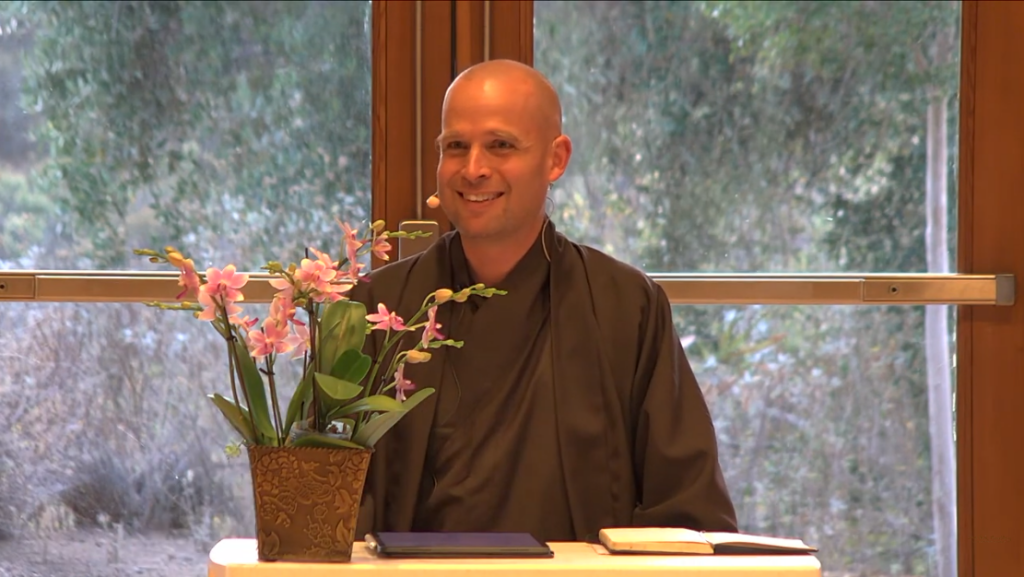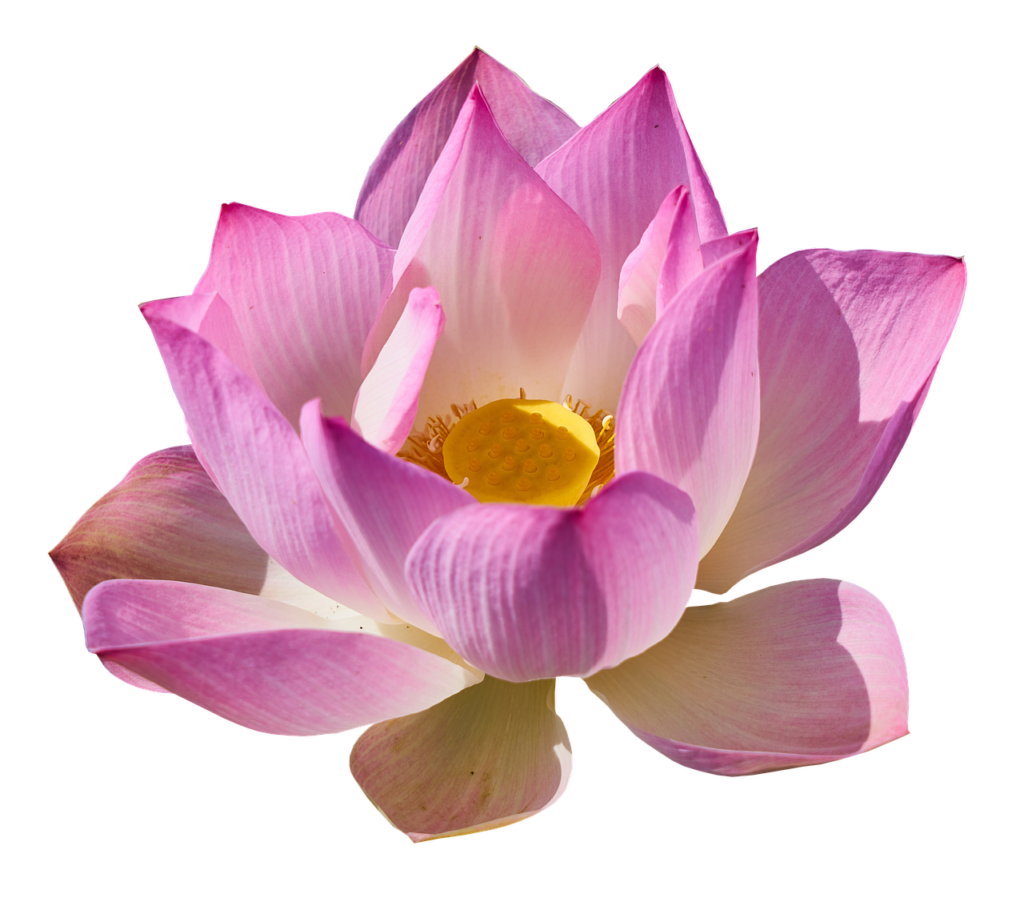The Forty Tenets were formulated and taught by Thầy in Plum Village during the Spring Retreat 2006, the Autumn Retreat 2006 and the Winter Retreats 2006, 2007. They serve as the foundation for the Plum Village teachings and practices and for our Mindfulness Trainings, whether they are the Five of the laity, the Ten of the novitiate, the Fourteen of the Order, or the several hundred of the monastics. (Read more about the background of these teachings here .)
Brother Phap Luu held a series of dharma talks on ‘The Forty Tenets of Plum Village’.
Fourty Tenets
1. Space is not an unconditioned dharma. It manifests together with time, matter and consciousness.
2. In the historical dimension, every dharma is a conditioned dharma. In the ultimate dimension, every dharma is an unconditioned dharma.
3. Nirvāṇa is the absence of ignorance (avidyā) and the afflictions (kleśāh), but not the absence of the aggregates (skandhāh), sense spheres (āyatanāni) and domains of existence (dhātuh).
4. Nirvāṇa is nirvāṇa. There does not need to be a nirvana with residue (sopādiśeṣa) or without residue (anupādiśeṣa).
5. It is possible to touch nirvāṇa in the present moment.
6. Nirvāṇa is not a phenomenon, but the true nature of all phenomena.
7. Not born means nirvāṇa and it is awakening to the truth of the deathless, the no-coming and no-going, the not the same and not different, the not being and not non-being.
8. The concentrations on emptiness, signlessness and aimlessness help us to touch Nirvāṇa and the Unconditioned.
9. The Three Dharma Seals are: impermanence, non-self and Nirvāṇa. We can uphold Four Dharma Seals or Five Dharma Seals with one condition: that they include Nirvāṇa.
10. The basic concentrations (samādhi) are the concentrations on impermanence, no-self, and Nirvāṇa.
11. The essential practices that give rise to liberation are mindfulness, concentration and insight.
12. Precepts are mindfulness. (Śīla is smṛti). Precepts and mindful manners are concrete expressions of mindfulness.
13. Right diligence is mindfulness trainings (morality, śīla) and therefore is also mindfulness.
14. Mindfulness, concentration and insight include each other. All three have the capacity to bring joy, happiness and liberation.
15. The awareness of suffering helps us recognize the existing conditions of happiness and also helps prevent the creation of wrong actions and the planting of negative seeds that will bring about suffering.
16. The Four Noble Truths are all conditioned. The Four Noble Truths are all unconditioned.
17. The Third Noble Truth can be called the truth of happiness.
18. Free will is possible thanks to the Three Trainings.
19. You should learn to see the Second Noble Truth as the path of the eight wrong practices. The deep cause of ill-being is not just desire.
20. A real Arahat is also a Bodhisattva and a real Bodhisattva is also an Arahat.
21. As a human being you have the capacity to be come a Buddha. As a Buddha you continue to be a human being. That is why numerous Buddhas are possible.
22. The Buddha has many bodies: the body of a living being, the Dharma body, the body outside of the body, the Sangha body, the continuation body, the Dharma-realm body, and the true nature of the Dharma-realm body. Since human beings can become Buddha they also have all these bodies.
23. We can talk of a person as a continuous and ever changing stream of five aggregates. This stream is always flowing. It is in connection with, receives from and contributes to other streams of phenomena. We cannot speak of a person as an unchanging and permanent separate self.
24. We can only understand the real teaching of rebirth (samsāra) in the light of impermanence, no-self and interbeing.
25. Happiness and suffering inter-are. Affliction and enlightenment are both of an organic nature.
26. The Sangha body, the Buddha body and the Dharma body inter-are. In a true Sangha you can find the true Buddha and the true Dharma.
27. Since the afflictions (kleśāh) and the awakening (bodhi) are of an organic nature, the practice needs to be constant in order for transformation to continue and for regression not to take place. Samsāra is a continuation and the beautiful and wholesome things need to be continued for as long as possible, while the not beautiful and unwholesome need to be transformed so that they do not continue. The compost has to be used to nourish the flowers.
28. Liberation from samsāra does not mean putting an end to the personal self (pudgala), because that person is not a real entity anyway, nor does it mean putting an end to the precepts’ body and the spiritual life.
29. Birth and death are only manifestation or non-manifestation. Both manifestor and manifested occur at the same time, the manifestation of one thing is the non-manifestation of something else.
30. A dharma is not a thing, an entity, but a process, an event and above all an object of mind .
31. Retribution consists of both body-mind and environment, and is both individual and collective. This land is the Saha land for living beings but Pure Land for Buddhas and Bodhisattvas.
32. There is no self but still there is the cycle of birth and death, there is inter-continuation and the nature of all inter-continuation is interbeing.
33. Each generation of Buddhist practitioners has to resist the human tendency and need on the one hand to make the Buddha divine and on the other hand to try to find a principle to take the place of a self.
34. Store consciousness has the capacity of learning, storing, protecting, responding, nourishing, healing and continuing. Its function is to establish a data base and unconscious habits of responding to situations, which makes it possible for a human being to act on ‘auto-pilot’.
35. Manas has the tendency to seek for security and long lasting pleasure. It is ignorant of the law of moderation, the danger of pleasure seeking and the goodness of suffering. It does not see the necessity for insight into impermanence, non-self, inter-being, compassion and communication.
36. With the practice of mindfulness, concentration and insight, mind consciousness can learn and download its insights to Store consciousness and leave Store consciousness to do the work of maturation and then manifest the seeds of wisdom that are already innate in Store consciousness.
37. The basic practice of Source Buddhism is the Four Domains of Mindfulness which has the function to recognize and transform the habit energies and fully realize the Seven Factors of Enlightenment and the Noble Eightfold Path. The Mahāyāna practice of meditation including the Zen of the patriarchs needs from time to time to go back to take a bath in Source Buddhism in order not to lose the essential Teachings of Buddhadharma.
38. The reality of the Pure Land or Nirvāna transcends both space and time. The reality of everything else is exactly the same.
39. Conditions, feelings, skandhas, āyatanas, dhātus, vijñāna, etc. are different ways of presenting the teachings. These different ways of presenting the teachings are not in opposition to each other.
40. The teachings on impermanence, non-self, inter dependence, emptiness, signlessness, aimlessness, mindfulness, concentration, insight, etc. constitute the heart of the Buddhist wisdom. They can go together with the spirit of science, they can be used in dialogue with science and offer suggestions and be a support for scientific research. Modern science should try to overcome the tendency of double grasping and scientists should train themselves to develop their capacity for intuition.

